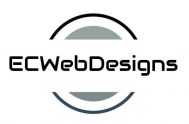Updating the content on your website helps to build customer confidence. In any market, customers likely use your website for market information. Additionally, updated data promotes domain authority.
Why Regularly Update Website Content?
The world is constantly changing, but the internet is changing rapidly. Regular website updates that keep up with the swift modifications taking place in our digital environment are necessary to keep our website relevant.
The following are the reasons why we need to regularly update our website’s contents:
1. SEO Enhancement
Regularly updating your website’s content is the best strategy to stay one step ahead of your competition. This helps suggest to search engines that your website is an authoritative and relevant source. As a result, higher page rankings will undoubtedly bring more people to your website.
2. Drives User Interaction
Posting fresh and relevant content promotes website user interaction. The users might want to browse the website’s pages for an extended period of time. When visitors find the information useful and relevant, it will improve engagement, increase visitor traffic, and decrease bounce rates.
3. Tech Trends to Consider
It might be difficult to keep up with the most recent design, technology, and user behavior as they change over time. By incorporating the most recent trends into your material, you can maintain the website’s visual appeal and practical relevance.
4. Website Security
Maintaining the most recent versions of your website’s content management system (CMS), plugins, and themes is essential for maintaining security. Because old software is more susceptible to vulnerabilities, frequent software upgrades assist in defending your website against these threats.
5. Competitive Edge
Continuous improvement is required to stay ahead in a competitive digital environment. With regularly updated content, your website stands out, establishing it as a reliable resource while giving you a competitive advantage.
I. Determining When to Update Content
There is no specific schedule for how frequently you should add or refresh website content. While some pages, like a blog, may require regular updating, others, like a Contact page, might be more static in nature. However, from digital marketing and user experience perspectives, maintaining your website makes good business sense.
If your website is selling goods or services online, you might need to update the information whenever there are new items or services to sell or whenever prices and delivery costs change. Providing accurate information to potential customers enhances the trustworthiness of your business and brand, demonstrating your commitment to constant updates.
Your overall web content strategy and website modifications go hand in hand. Any copy revisions should adhere to your website’s search engine optimization (SEO) plan and continue to use any relevant keywords you’ve identified for your industry.
As you update your website, analytics can help inform changes to your content strategy. You may learn more about what’s working by doing a deep dive into the traffic to your website. You can examine trends and modify your content as necessary. For instance, blogs with a list structure may do better, or headlines that offer a question may attract more readers.
The goal is to evaluate the relevance of content and determine whether it requires updating, deletion, or archiving. Use tools like Google Analytics, Screaming Frog, or the Dyno Mapper Content Audit tool to hasten this process.
We’ll look into the steps you may take to audit the existing content on your website to determine whether it requires an update.
A. Conduct an SEO Audit
The goal is to evaluate the relevance of content and determine whether it requires updating, deletion, or archiving. Consider a number of SEO criteria when upgrading the content on your website.
Typically, an SEO audit examines the following aspects:
- Indexing and crawlability
- User experience
- Site architecture
- Competitor benchmarking
- Keyword research
- On-page SEO
- Backlink profile
It essentially serves as a website’s “health check” throughout.
B. Competitive Benchmarking
Competitive benchmarking analysis aims to compare your brand’s performance to others in your sector. To determine whether you compare favorably or poorly, you could evaluate their business strategy, procedures, or the goods and services they provide.
By researching competitors, you can decide what changes to make to your website to stay competitive. . Additionally, you could discover what approach would be best for your brand and company.
You may observe the strategies employed by the pages that appear at the top of the search results for the keywords you’ve selected. Pay attention to details such as whether there are multimedia elements, whether the headings contain keywords, and the content’s general caliber.
Really, there is nothing wrong with it.
Domain Overview is an excellent place to begin.
1. Click “Search” after entering your domain and country.
2. Next, navigate to the “Compare Domains” tab.
3. Then select “Compare.”
The tool allows you to compare the major metrics of the chosen domains. These will give you a clear picture of your strengths and areas for improvement.
Concentrate on the following metrics to obtain the most comprehensive overview:
- Authority Score. The domain’s authority score, ranging from 1 to 100, measures its overall quality based on backlinks, search volume, and other characteristics.
- Organic Traffic that the domain receives.
- Organic Search displays the number of keywords that the domain ranks for.
- Referring Domains display the number of various domains that link to the studied domain (this offers a better comparison image than the total number of backlinks).
C. Identifying Contents to be Updated
Identifying which website pages require a refresh is crucial. In this process, an audit or inventory of the content can be helpful.
- Using rank-tracking tools like Ahrefs or Semrush, you can identify pages with poor ranks for your target keywords.
- Technologies like Google Search Console or Google Analytics can identify pages with high bounce rates or minimal interaction on sites with low organic traffic or conversions.
- To maintain their relevance, web pages or evergreen content published more than a year ago may benefit from revisions.
- To reflect current facts, update the content with the dates or years specified in the title or meta description.
- We should examine and improve pages with poor user experiences, such as those with outdated website designs or troublesome plugins.
After you have determined which pages require re-optimization, make a reasonable schedule and timeline so that you can proceed with the improvements in a methodical manner.
II. Updating and Refreshing Website Content
Take a moment to reflect on all the long-standing websites you have visited. You would have noticed that they consistently improved the design’s user-friendliness by including different graphic elements and features. This emphasizes how important it is to maintain up-to-date and relevant content.
To achieve consistent content updates within your content strategy, consider implementing the following:
A. Improving Multimedia Components
By adding visual elements to your website, such as images, graphics, and videos, you may improve its aesthetic appeal and break up long passages of text to increase reader engagement.
Although dense writing that surpasses 1000 words can be tough for readers to follow, long-form content frequently ranks well in search engine results. By sprinkling multimedia components throughout the text, you provide readers with visual breaks that entice them to stay on the page for extended periods of time.
This increased page interaction positively impacts your chances of ranking higher on Google.
However, it’s crucial to optimize your website’s efficiency through picture compression and embedding videos from different hosting services. Large file uploads straight to your website can slow down loading times, degrade the user experience, and have a negative impact on your SEO. To accomplish this, you can utilize Cloudflare’s image compression tools, like Cloudflare Polish, which optimizes photos using techniques such as:
- Lossy and Lossless Compression
- WebP Conversion
B. Testing Various Modifications
You don’t have to haphazardly update your website’s content. To find out what works for your visitors, try different changes. With the Google Optimize, you can experiment with different elements of your website.
To help you develop memorable client experiences, it has tools for A/B testing, website testing, and personalization that are especially suited for small enterprises.
Even minor adjustments can have a significant impact. Simply changing the wording on your homepage or placing a call to action next to a pricing table can make a noticeable difference.
C. Reviving Outdated Design and Content
It’s worthwhile to spend time giving your website a new look if it has a lot of content.
Imagine you’re a fitness enthusiast who published a well-read blog post about efficient exercise regimens a few years ago. It’s possible that fresh studies and methods have developed over time.
It would save you time to go back and edit the existing article with the most recent information and suggestions rather than generate a totally new post. Once updated, you can reshare it with your audience on social media sites like Instagram or YouTube.
By keeping your material up-to-date, you provide your viewers with useful and reliable information. You also need to maintain the design of your website.
D. Plugin and Theme Updates
Plugins and themes are essential for your website, as they greatly enhance its functionality, design, and user experience. Plugins provide additional functionalities and tools that improve interactivity, thereby increasing your website’s engagement and user-friendliness.
Themes determine the overall appearance and user-friendliness of your website, making it visually attractive and simple to browse.
Consistently updating plugins and themes is essential for ensuring optimal speed and security. Regularly updating plugins frequently introduces novel functionalities, resolves software defects, and enhances compatibility, hence enhancing the overall user experience.
Updating themes can provide design improvements and ensure that your website stays consistent with the most recent web standards.
Failure to keep up with updates can result in security vulnerabilities, compatibility problems, and a diminished user experience. Obsolete plugins and themes may not be compatible with more recent iterations of your content management system, leading to possible disruptions.
Hence, it is imperative to keep up to date with changes in order to offer your audience a dependable, safe, and pleasurable browsing experience.
3. Establishing a Successful Content Maintenance System
Now that you’ve assessed your existing content and identified the components that require replacement, it’s time to explore how to initiate the content updating process using an effective content maintenance system.
WordPress is notable for its versatility, user-friendliness, and vast array of plugins, which contribute to its widespread popularity across a diverse range of websites.
Joomla and Drupal are both suitable options for anyone looking to manage more intricate websites. These platforms provide extensive functionality and the opportunity to customize the site according to specific requirements. Joomla is slightly easier to use, while Drupal offers a highly configurable solution.
Magento and Shopify provide powerful and adaptable systems specifically designed for e-commerce firms. Magento is renowned for its robust features and scalability, making it well-suited for larger enterprises with intricate requirements.
On the other hand, Shopify stands out because of its user-friendly interface and extensive range of features, which make it perfect for small to medium-sized businesses looking for a simple and efficient setup.
Wix, Squarespace, and Blogger may be better suited for smaller organizations or individuals.
Wix provides a user-friendly interface that allows users to easily drag and drop elements, making it ideal for individuals who are new to website building and small businesses. Squarespace, known for its visually impressive layouts and user-friendly interface, caters specifically to creative professionals and small businesses. On the other hand, Blogger offers a straightforward and cost-free platform that is particularly suitable for personal blogging.
Choosing the right platform is essential for establishing a content maintenance system that is smooth and effective.
A. Formulating a Strategy
Understanding your organization’s goals and priorities is essential before starting the content upgrading process. Consider whether your main objectives are to spread knowledge, produce leads, increase product sales, offer self-service capabilities, or pursue something else new. Avoid publishing material randomly; having a clear strategy in place is essential for success.
For instance, updating your evergreen content on a regular basis will help it stay relevant and improve its exposure on search engines like Google if your company wants to create leads through your website. This makes it more likely that your material will show up in search results when potential clients look up pertinent topics or keywords.
B. Establishing a System for Organization
It’s time to organize every piece of material into a system now that you’ve determined what content works with your organization’s agenda and overarching plan.
Here is a step-by-step guide to organizing and updating your material efficiently:
Step 1: Compile A List of all of Your Content Assets.
Make a thorough inventory of every piece of digital information you have, such as websites, pages, blogs, case studies, photos, and more. To catalog and arrange your assets, use a basic spreadsheet, a content management system, or a mix of technologies.
Step 2: Implement a Content Calendar
To keep track of your published material, planned plans, and scheduled updates, create a content calendar. This calendar will act as a reminder and serve as a guide for when you should republish or highlight noteworthy information. Use specialized calendar services, or go with a straightforward spreadsheet or template.
Step 3: Put an editorial process into practice
Create an editorial procedure for your marketing team to use to revisit and update old material on a regular basis. Utilize staff, procedures, and technology to create repeatable, scalable content.
For that:
- Brainstorm: Come up with ideas for new articles and decide which ones need updating and improving.
- Plan: Create a content calendar with a schedule for updates.
- Produce: Put your content’s updates, alterations, or improvements into action.
- Publish: Disseminate the revised content in accordance with your goals.
- Maintain: Check back on the content later for any new updates, enhancements, or repurposing.
- Rinse and repeat: Continue iterating through the editorial process while regularly maintaining and updating your material.
C. Leveraging Alerts and Tools
Avoid letting content updates and maintenance go between the cracks. Using alerts to keep track of your content management activities can be a useful solution. Whether you opt for calendar alerts or phone notifications, it’s crucial to ensure timely reminders.
For example, consider a seasonal campaign with Christmas promotions. You can set up alerts to remind you to update your material with the latest discounts and specials before the holiday season starts.
Alerts serve as helpful reminders, encouraging you to take action by keeping content maintenance at the forefront of your mind.. Select the most effective alerting technique for your process, then use it to proactively manage your content modifications.
Essential Website Care for WordPress Updates
WordPress automatic updates have proven to be both advantageous and disadvantageous for numerous website owners, providing convenience while also presenting substantial risks.
Previously, many clients had compatibility problems that led to malfunctioning websites and missing content when an automatic update for a plugin or theme went wrong.
This has resulted in significant frustration and periods of inactivity, which can be particularly detrimental for organizations that depend on their online presence.
In light of these difficulties, EC Web Designs provides a specialized service dedicated to the care and maintenance of websites.
Our team of specialists oversees and verifies changes in real time, guaranteeing prompt resolution of any potential problems. Adopting a proactive approach minimizes the risk of disruptions, ensuring the smooth and efficient operation of websites.
Clients can alleviate concerns about unforeseen technological issues by delegating their website maintenance to EC Web Designs, allowing them to concentrate on their primary company operations.
Each update undergoes manual inspection by highly qualified personnel to ensure compatibility with current site features, thereby maintaining both functionality and aesthetics. The presence of human interaction is essential for ensuring a smooth and dependable online experience.
The SafeUpdates by Cloudways Program
You can easily keep your plugins and themes up to date with SafeUpdates, eliminating the need for manual work and saving critical time.
You can use SafeUpdates to automatically update your key WordPress applications. Additionally, you can make sure that your plugins and themes are constantly up-to-date without needing to manually update them by setting up automatic updates.
With this automation, you can focus on expanding your company while keeping your website safe and effective. In our separate blog, we have further information about automating WordPress updates with SafeUpdates.
Conclusion
In conclusion, upgrading your website’s content frequently is essential for preserving its usefulness, effectiveness, and competitiveness. Your material may stay current and useful by evaluating the need for updates, looking at SEO and competitor websites, and finding areas for development.
Additionally, for functionality and security, updating your plugins and themes is essential.
Consider using the Cloudways SafeUpdates tool or other similar tools for convenience and peace of mind when manually upgrading core, themes, and plugins on the go.
To stay current and give your readers something valuable, keep in mind that changing your website’s content frequently is essential. To continue succeeding, be proactive in your content maintenance efforts.
Ready to keep your website competitive and secure? Visit EC Web Designs to upgrade your content, plugins, and themes effortlessly, ensuring optimal performance and user satisfaction. Act now to maintain your website’s edge with our expert services.




